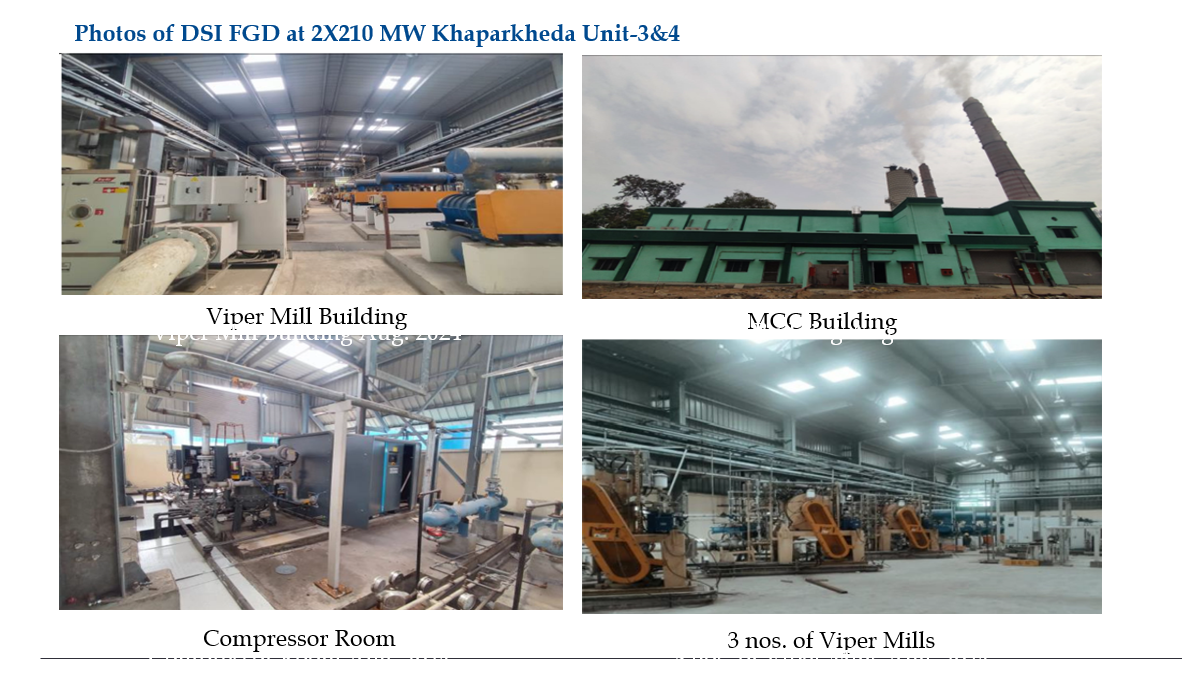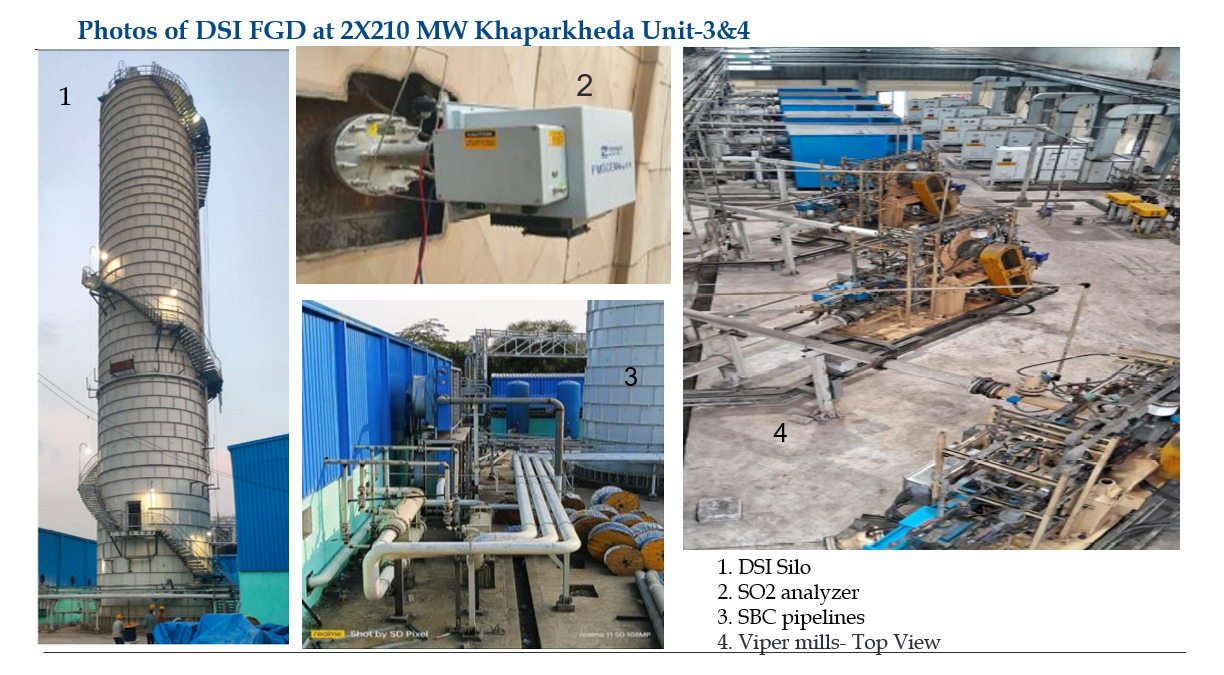FGD System at Khaperkheda Unit-3&4 – Maharashtra State Power Generation Co. Ltd

FGD System at Khaperkheda Unit-3&4
Problem
- High SOx emissions from coal-based power generation required urgent control measures as per MOEF&CC notification (07.12.2015).
- Statutory mandate for Flue Gas Desulphurization (FGD) installation to meet environmental compliance.
- Delays in manpower mobilization led to project time extensions.
- Delays in material supply disrupted scheduled timelines.
- Civil works delays further compounded project completion challenges.
Solution
- Installation of Dry Sorbent Injection Technology FGD system at Khaperkheda Thermal Power Station Units 3 & 4 (2 × 210 MW).
- Time limit extensions granted at multiple stages to manage manpower, material, and civil work delays.
- Coordination by Director Operations and Project Wing to oversee erection, commissioning, and trials.
- Structured project management covering engineering, procurement, construction, and PG testing.
- Adjustments ensured compliance with environmental norms without abandoning project timelines.
Outcomes
- SOx emissions reduced, meeting MOEF&CC environmental standards.
- Full compliance with statutory requirements for pollution control.
- FGD systems operational at Khaperkheda Unit 3 & 4 since October 2024.
- The project sets a replicable model for future FGD installations across Maharashtra.
- Improved environmental sustainability while maintaining reliable power generation.
SKOCH Award Nominee
Category: Government Undertaking
Sub-Category: Government Undertaking
Project: FGD System at Khaperkheda Unit-3&4
Start Date: 0-17-2022
Organisation: Maharashtra State Power Generation Co. Ltd
Respondent: Radhakrishnan B.
http://www.mahagenco.in/
Level: Club Star
Video
See Presentation
Gallery
Case Study
FGD System at Khaperkheda Unit-3&4
The Maharashtra State Power Generation Company Limited (MSPGCL) implemented a Flue Gas Desulphurization (FGD) system at Khaperkheda Thermal Power Station Units 3 and 4 in Nagpur to address India’s tightened environmental regulations. This strategic initiative aligns with the Ministry of Environment, Forest and Climate Change (MOEF&CC) directives and India’s sustainable development goals by substantially reducing sulfur dioxide (SO₂) emissions, a major cause of acid rain and respiratory illness.
The project was governed through strong institutional oversight, with MSPGCL’s Board and Project and Operations departments ensuring seamless execution. Activities followed a structured timeline beginning with feasibility studies and tendering, followed by engineering, civil works, installation, commissioning, and performance guarantee testing. A dedicated team oversaw vendor management, supply chain coordination, and compliance monitoring, ensuring timely completion without significant delays or cost overruns.
Dry Sorbent Injection (DSI) technology was selected for its suitability in retrofitting older plants, lower water use, and compatibility with existing systems. Injecting hydrated lime or sodium compounds into flue gas streams neutralized SO₂ effectively, meeting performance and environmental benchmarks. Regular reviews, inspections, and transparent communication with regulators and communities reinforced project accountability.
Beyond compliance, the project demonstrated MSPGCL’s proactive approach to environmental stewardship, shifting from reactive measures to long-term sustainability planning. The success strengthens regulatory credibility, reduces risk of penalties, and contributes to India’s National Clean Air Programme (NCAP). Importantly, the project provides a replicable model for retrofitting emission controls in other plants, positioning MSPGCL as a benchmark for responsible energy generation.
For more information, please contact:
Radhakrishnan B. at md@mahagenco.in
(The content on the page is provided by the Exhibitor)


